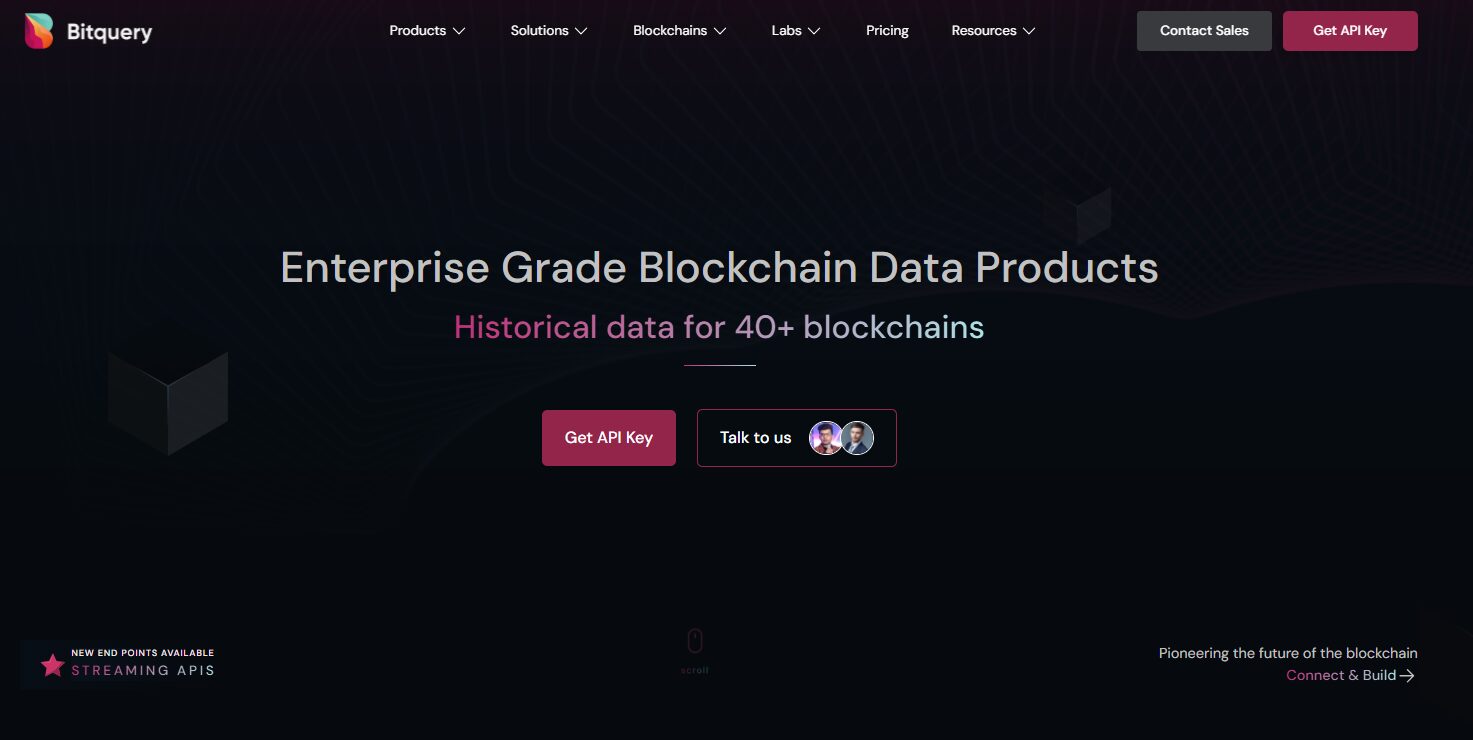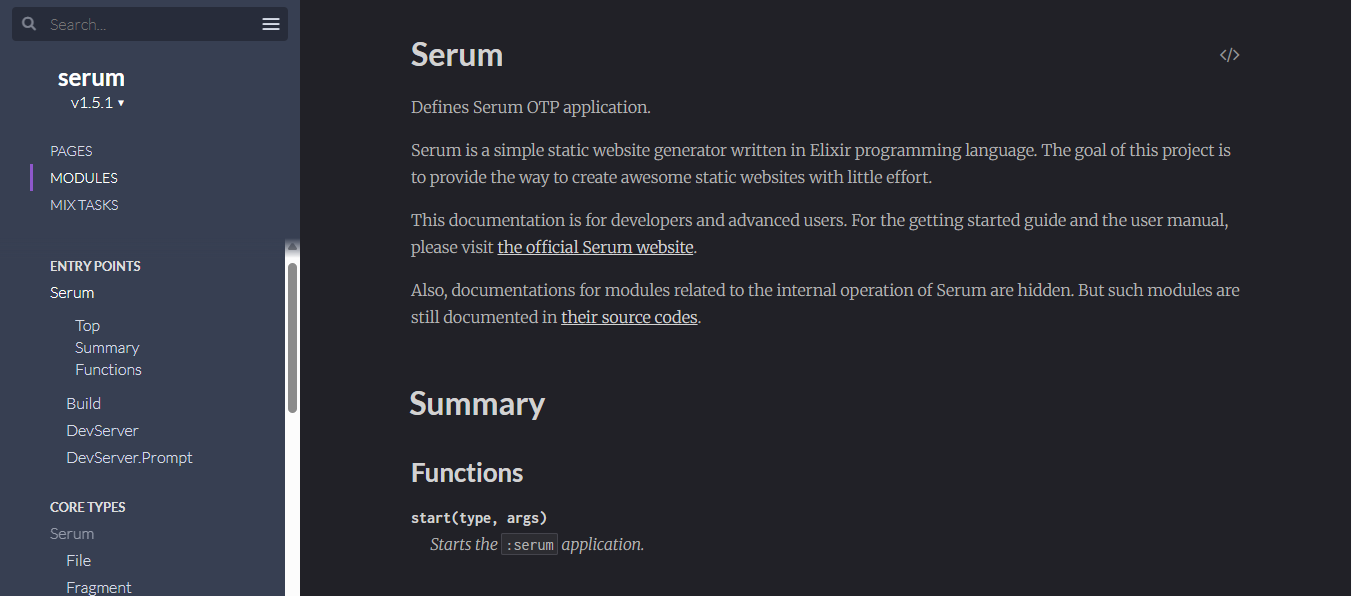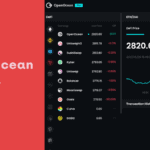The Solana ecosystem has seen a rapid rise in activity, especially with platforms like Pumpfun, which makes it easy for anyone to launch a meme coin. As these tokens gain popularity, they often move to Pumpswap, a decentralized exchange where they can be traded more freely.
For developers building apps, trading bots, or dashboards around these tokens, access to accurate and real-time data is essential. Several API providers now offer powerful ways to track token swaps, prices, volume, and more on Pumpswap.
In this blog, we explore some of the top APIs available for Pumpswap. These APIs are helping developers build faster, smarter, and more responsive applications in the fast-moving world of Solana.
Table of Contents
Top 10 Pumpswap APIs
There are several APIs that make it easy to access real-time data from Pumpswap. These APIs help developers track swaps, token prices, volume, and more. They are useful for building apps, bots, and analytics tools in the Solana ecosystem.
Let us explore the top Pumpswap APIs available today.
1. Bitquery Pumpswap Swaps API
Bitquery is a blockchain data platform that gives developers access to real-time and historical data from over 40 blockchains, including Solana. It offers flexible APIs that help track on-chain activity, power dashboards, build trading tools, and analyze token performance with ease.

The Pumpswap Swap API is designed for developers who want to track everything happening on the Pumpswap decentralized exchange. Whether you’re building a trading app, an analytics platform, or a price monitoring tool, this API gives you access to detailed token swap data on Solana.
You can retrieve newly created liquidity pools, follow trades in real time, analyze volume and price action, and even use WebSocket support for live updates. The API also supports filters by token, wallet, and time range, allowing you to build features tailored to your needs.
Key Features
Here are some of the key features of Bitquerry Swaps API
- Track trading activity in real time: You can monitor the latest trades happening on Pumpswap. This includes trades made by specific wallets or involving specific tokens. WebSocket support allows you to stream live trade data.
- Get detailed price and volume data: The API provides real-time token prices in USD along with trading volume. This is helpful for building price alerts, tracking market trends, or powering analytics tools.
- Analyze token performance with OHLC data: You can retrieve Open, High, Low, and Close price data for any token. This is useful for technical analysis and building chart-based features.
- Discover new and trending tokens: You can detect newly created liquidity pools on Pumpswap. The API also lets you track tokens that have migrated from Pump.fun to Pumpswap.
- Measure market behavior: The API gives access to buy volume, sell volume, total trade volume, the number of buyers and sellers, and the most active traders on the platform.
- Build personalized analytics: You can filter the data by wallet address, token, or time range. This makes it easier to build custom dashboards, portfolio trackers, or trading bots.
This API is ideal for developers building dashboards, trading bots, on-chain explorers, or community tools focused on Solana’s fast-growing meme coin market. With real-time access and broad query options, Bitquery makes it easier to build reliable tools for a fast-moving ecosystem.
2. Bitquery Pump.fun Migration & Marketcap API
The Pump.fun Migration & Marketcap API by Bitquery helps developers understand the full lifecycle of tokens launched through Pump.fun on Solana. It allows you to check if a token has migrated to Pumpswap, and it provides detailed bonding curve data, including market capitalization based on Pump.fun’s unique pricing model.
This API is especially useful for developers, analysts, or platforms that track trending tokens and want to show users whether a token is still in its bonding curve phase or already trading on a decentralized exchange. It also offers a clean and accurate way to display a token’s market value even before it reaches a public trading platform.
The bonding curve system used by Pump.fun increases a token’s price as more users buy it. This API uses that curve to calculate the token’s real-time valuation. It multiplies the token’s current price by its fixed supply of 1 billion tokens to give an accurate marketcap estimate.

A built-in chatbot powered by Chatbase.co is available to assist developers with creating API v1 and v2 queries. It provides real-time guidance and directs users to additional resources or support channels when needed.
By checking migration status, developers can clearly show whether a token is available on Pumpswap or still only tradable on Pump.fun.
Key Features
- Check if a Pump.fun token has been migrated to Pumpswap
- Get real-time market capitalization based on the bonding curve price
- Track how far a token has progressed along its bonding curve
- Understand token availability across different stages of its lifecycle
- Useful for dashboards, token trackers, and market insights
This API gives developers a clear way to show users which tokens are still growing and which have matured into public trading. It supports better discovery, tracking, and presentation of the fast-moving meme coin economy on Solana.
3. PumpPortal API
PumpPortal is a third-party API built for interacting with tokens on Pump.fun and trading them using programmatic access. It allows developers to automate token purchases and retrieve real-time bonding curve data using simple HTTPS requests. The API is designed to be quick, lightweight, and easy to integrate into small bots or trading scripts.

It supports both a Lightning mode for instant transactions and a Local mode for greater customization and security. Developers can choose the method that fits their workflow best. The API also provides endpoints for accessing price, supply, and marketcap data based on the bonding curve model.
Key Features
- Instant Trading: Allows developers to perform buy and sell operations instantly through the Lightning API using simple HTTPS calls.
- Custom Transaction Control: Supports building and signing transactions locally using the Local API with custom RPC endpoints for greater control.
- Real-Time Bonding Curve Data: Provides live token pricing, supply, and curve-based marketcap information directly from Pump.fun.
- Simple Integration: Designed for quick setup and lightweight implementation without requiring external libraries or complex dependencies.
Pros
- Easy to integrate with minimal setup required
- Supports both simple and advanced transaction workflows
- Fast response time, suitable for trading bots or real-time tools
Cons
- Does not offer historical trade or price data
- No built-in support for filtering by token or wallet
- Lacks features like OHLC charts, volume metrics, or trader analytics
4. SolXtence Swap API
SolXtence Swap API is built to simplify token swaps on the Solana blockchain. It supports a wide range of tokens, including those from platforms like Pump.fun, Raydium, and Moonshot. Developers can use it to automate trades or power swap features in DeFi apps.

This API is designed to handle routing logic so developers don’t need to worry about the underlying swap paths. It focuses on ease of use and helps reduce the complexity of interacting with multiple DEXs. It is especially helpful for bots, custom frontends, and lightweight applications.
Key Features
- Multi-DEX Support: Enables token swaps across Solana DEXs including Raydium, Jupiter, Pump.fun, and Moonshot.
- Automatic Routing: Handles routing and pathfinding internally, so swaps are optimized without manual configuration.
- Flexible Token Coverage: Works with both popular tokens and newly launched meme coins, making it ideal for trend-driven tools.
Pros
- Supports a wide range of Solana-based tokens and platforms
- Simplifies routing and swap logic for developers
- Works well for both new and experienced builders
Cons
- No analytics or trade history data included
- Limited customization for routing strategies
- Lacks built-in support for price tracking or liquidity analysis
5. Jupiter Swap API
Jupiter is a popular liquidity aggregator on Solana that finds the best token swap routes by comparing prices across multiple DEXs. It helps developers execute optimized swaps without needing to manually manage complex routing logic.

Key Features
- Best Price Routing: Automatically finds and executes the best swap route across supported platforms.
- Wide Token Access: Supports thousands of tokens across Solana, including long-tail and meme assets.
- Quote and Swap APIs: Offers separate endpoints for price quoting and transaction building.
- Slippage and Fees Control: Let’s developers set slippage tolerance and estimate trading fees before execution.
Pros
- Optimizes swap paths for the best available price
- Easy integration for DeFi apps and wallets
- Broad token support across the Solana ecosystem
Cons
- Focused only on swaps, no historical data or analytics
- No direct bonding curve or Pump.fun-specific data
- Requires additional tools for token or trader insights
6. Raydium API
Raydium is one of the earliest and most established automated market makers (AMMs) on Solana. Its API allows developers to access liquidity pools, perform token swaps, and retrieve real-time market data for a wide range of tokens.

Key Features
- Liquidity Pool Access: Allows querying of pool reserves, token pairs, and price impact estimates.
- Swap Functionality: Enables token swap execution directly through Raydium’s pools.
- Market Data: Provides up-to-date info on token prices, pool volume, and liquidity.
- Yield Farming Support: Developers can access farm data for building DeFi dashboards.
Pros
- Stable and reliable DEX with deep liquidity
- Supports both swapping and liquidity farming features
- Useful for price tracking and DeFi analytics
Cons
- No support for bonding curve or Pump.fun-specific tokens
- Lacks historical trade filtering by wallet or token
- Requires manual handling of routing for optimal swaps
7. Serum API
Serum is a decentralized exchange built on Solana that uses a traditional order book model, unlike most AMMs. This structure allows users to place limit and market orders, offering more control over how and when trades are executed. It’s a great choice for developers building advanced trading platforms or analytics tools.

The API gives full access to order book data, recent trades, market stats, and trading pair metadata. It supports order placement, cancellation, and tracking, making it suitable for high-frequency trading strategies or custom interfaces that require precise execution.
Key Features
- Order Book Access: View live order books with bid and ask data for supported pairs.
- Limit Order Support: Place, manage, and cancel orders with full control over pricing.
- Market Activity: Track recent trades, trade history, and price movements.
- Pair Metadata: Retrieve details about available markets, token pairs, and tick sizes.
Pros
- Allows full control over trades with order book functionality
- Rich data useful for pro-level dashboards and strategies
- Suitable for high-frequency and algorithmic trading setups
Cons
- More complex to implement than AMM-based APIs
- Not designed for meme token or bonding curve tracking
- Requires order book syncing and deeper technical setup
8. Orca API
Orca is a user-friendly decentralized exchange on Solana that focuses on simplicity and fast token swaps. It uses an automated market maker (AMM) model and is known for its clean interface, low slippage, and efficient routing. Developers can use its API to enable swaps and liquidity interactions in DeFi apps.

The API supports basic swap functionality, token price info, and access to liquidity pool details. It’s ideal for builders who want to add reliable swap features without managing complex routing or order logic. Its lightweight structure also makes it suitable for mobile and frontend integrations.
Key Features
- Swap Execution: Allows users to perform token swaps with minimal delay and low slippage.
- Liquidity Pool Data: Provides details on token reserves, liquidity depth, and current pool pricing.
- Token Metadata: Access symbols, decimals, and token pair information for smooth integration.
- Routing Efficiency: Uses Orca’s internal algorithm to route swaps with optimized performance.
Pros
- Clean and simple to use for basic swap functions
- Quick integration for lightweight apps and interfaces
- Ideal for adding swap features to wallets and dashboards
Cons
- No historical data or trader-specific insights
- Limited support for emerging or bonding curve tokens
- Not designed for advanced routing or analytical features
9. Solana Token Swap Program
The Solana Token Swap Program is an on-chain program that facilitates the trading of token pairs without the need for a centralized order book. It employs automated market maker (AMM) curves to determine the pricing of trades, allowing for decentralized and efficient token exchanges. This program is foundational for developers looking to integrate swap functionalities directly into their Solana-based applications.

Key Features
- Automated Market Making: Utilizes predefined mathematical curves to automate the process of market making, enabling seamless token swaps.
- Decentralized Trading: Allows for the exchange of token pairs in a decentralized manner, removing the need for intermediaries.
- Liquidity Provision: Enables users to provide liquidity to token pools, earning fees from the trades executed within those pools.
- Integration with SPL Tokens: Designed to work seamlessly with Solana Program Library (SPL) tokens, ensuring broad compatibility within the Solana ecosystem.
Pros
- Decentralization: Facilitates trustless and permissionless token swaps without relying on centralized entities.
- Efficiency: Offers low-latency and cost-effective trading experiences due to Solana’s high-performance blockchain capabilities.
- Composability: Can be integrated into various decentralized applications (dApps) to provide native swap functionalities.
Cons
- Complexity: Requires a solid understanding of Solana’s architecture and the AMM model for effective integration and utilization.
- Liquidity Dependence: The effectiveness of swaps is contingent on the availability of liquidity within the pools; low liquidity can lead to higher slippage.
- Security Responsibility: Developers must ensure the security of their implementations, as vulnerabilities can be exploited in decentralized systems.
10. Solana Tracker Swap API
The Solana Tracker Swap API offers developers a unified interface to execute token swaps across multiple Solana-based decentralized exchanges (DEXs) such as Pump.fun, Moonshot, Raydium, and Meteora.

Designed for efficiency, it emphasizes rapid pool discovery and seamless trading functionalities. This API is particularly beneficial for applications aiming to provide users with comprehensive trading options without the need to integrate multiple DEX-specific protocols.
Key Features
- Unified DEX Interface: Facilitates token swaps across various Solana DEXs through a single, cohesive API.
- Rapid Pool Discovery: Quickly identifies and connects to available liquidity pools, ensuring efficient trade execution.
- Comprehensive Trading Support: Supports a wide range of tokens and trading pairs, expanding the scope of potential trades.
Pros
- Versatility: Enables interactions with multiple DEXs without the need for separate integrations.
- Efficiency: Optimized for fast pool discovery, leading to quicker trade executions.
- Scalability: Suitable for applications aiming to offer extensive trading functionalities within the Solana ecosystem.
Cons
- Dependency on External Service: Reliance on Solana Tracker’s infrastructure may introduce external points of failure.
- Potential Latency: While optimized for speed, the abstraction layer might introduce minimal latency compared to direct DEX integrations.
- Feature Limitations: May not support some advanced features specific to individual DEXs.
Choosing the Right One
With many APIs to pick from, the best choice depends on the kind of project you are building. Some are made just for swapping tokens. Others offer more detailed data that can help track prices, wallet activity, and trends over time. It is good to plan your needs first.
If your project needs more than just trading, you should look for APIs that also give historical data, token charts, and market activity. This is useful when building dashboards, bots, or anything that shows token movement. APIs with these features can help you build smarter and more helpful apps.
Some APIs are quick to use but offer limited information. Others are more complete and give a full view of what is happening on-chain. These are helpful when working with fast-changing tokens and active users. Choosing a complete solution makes your app more reliable and more useful for your users.
Key Takeaways
Pumpswap is becoming an important part of the Solana ecosystem, especially for tokens that start on Pump.fun. For developers, having the right API means easier access to real-time data, price tracking, and trading activity. Whether you are building a bot, a dashboard, or a trading app, these APIs give you the tools to do more with less effort.
Some APIs focus on simple swaps while others offer full access to trading data, token history, and market behavior. Choosing an API that fits your project goals is important. If you need more detailed insights and flexible features, look for APIs that provide both real-time and historical data to help you build better apps.










